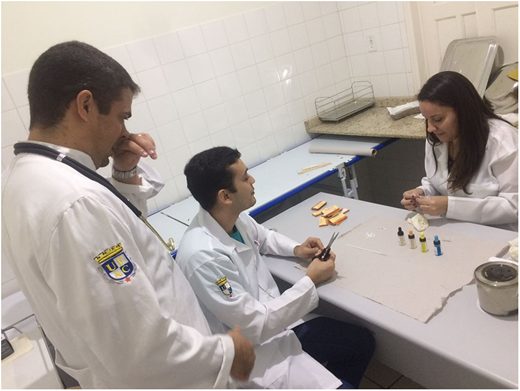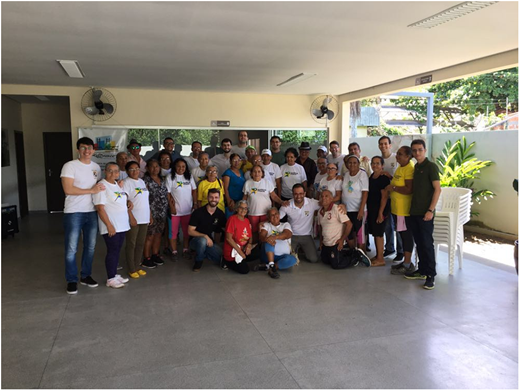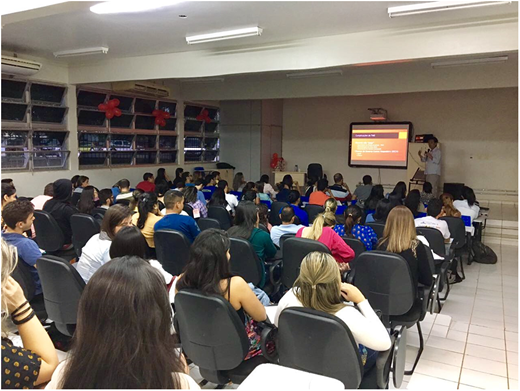Background
Brazil currently has 316 medical schools offering 29 234 places for the first year of medical school. In 2017, there were 35 178 resident doctors attending the first and sixth year. Of these, only 0.7% (203) are residents in hematology and hemotherapy. The demand for the specialty seems to be diminishing, because in 2015, only 58.02% of the vacancies offered for the first year of residence in hematology were filled. As a consequence, there are 2668 registered hematologist physicians, which corresponds to only 0.7% of all specialists and a ratio of 1.28 hematologists per 100 000 inhabitants.
The state of Acre is in the northern part of Brazil, and the population was estimated at 829 619 for 2017, which corresponds to less than 0.4% of the Brazilian population. The northern region of Brazil has only 3% of hematologists, and in Acre, we have only 6 hematologists or hemotherapists (0.72 hematologists per 100 000 inhabitants). There is interest among Brazilian medical authorities and hematologists to reverse that picture by improving the dissemination of the specialty, stimulating resident physicians to participate in medical congresses, and establishing partnerships with the academic community.
Objectives
Increase the interest of medical scholars in hematology and hemotherapy.
Develop extracurricular activities aimed at medical education, scientific research, and health care promotion.
Establish a partnership with the Brazilian Association of Hematology and Hemotherapy.
Methods
An academic hematology league (Liga Acadêmica de Hematologia do Acre [LAHAC]) was implemented in Acre in 2016 through an extension project linked to the Federal University of Acre (UFAC). The activities of the league consist of a theoretical-practical axis based on theoretical classes and tutoring sessions coordinated by the teachers, as well as practical classes in the outpatient clinic and infirmary. The academic league should promote the development of humanized doctor-patient relationships, because extension programs work within the community. Based on this, there is a greater possibility of flow of knowledge between the binders and the community, with strengthening of the bond, and eventual social transformation.
Capacity building
Accomplish the legal construction of the academic league.
Offer fixed biweekly theoretical classes and additional lessons throughout the project.
Offer practical classes based on previous theoretical classes.
Organize at least 3 extension actions in the community and 3 research actions by the end of the project.
Perform community activities that include education and health care.
Organize and monitor symposiums, conferences, congresses, seminars, mini courses, and lectures and ask students participating in the academic league in health courses at UFAC to use questionnaires referring to hematology.
Results
Integrated 2 specialist professors in hematology and hemotherapy, 1 with a master’s degree and 1 with a doctorate.
Conducted a hematology symposium in 2016.
Created the LAHAC video channel.
Created the extension project MedEnsina: “Taking basic health knowledge to the community of the district of Calafate.”
Defined donating life: the action of spreading information about and encouraging the donation of blood and bone marrow.
Explained iron deficiency anemias: what “bug” is this?
Provided a list of the subjects covered in classes or tutorial sessions: leukemias, thalassemia, multiple myeloma, paroxysmal nocturnal hemoglobinuria, Hodgkin lymphoma, hemophilia, mantle cell lymphoma, other coagulopathies, and myelodysplastic syndromes.
Presented 4 posters at the Brazilian Congress of Hematology of the Brazilian Hematology and Hemotherapy Association.
Registered the LAHAC in the Brazilian Association of Hematology and Hemotherapy.
Developed a research project on blood donation reactions.
Conclusion
There are singular difficulties in medical practice and teaching hematology and hemotherapy in developing countries where the presence of specialists is low, but these difficulties can be overcome successfully with the active support and participation of the academic community. We need to continue to develop new research and extension projects and include resident medical clinicians and pediatricians in our academic league.
Authorship
Conflict-of-interest-disclosure: The authors declare no competing financial interests.
Correspondence: D. E. Fujimoto; e-mail: denys.fujimoto@hotmail.com or denys.fujimoto@gmail.com.




